Submitted by WA Contents
Neri Oxman's Mediated Matter Group releases the process of Silk Pavilion II spun by 17,532 silkworms
Italy Architecture News - Jun 30, 2020 - 10:32 7285 views
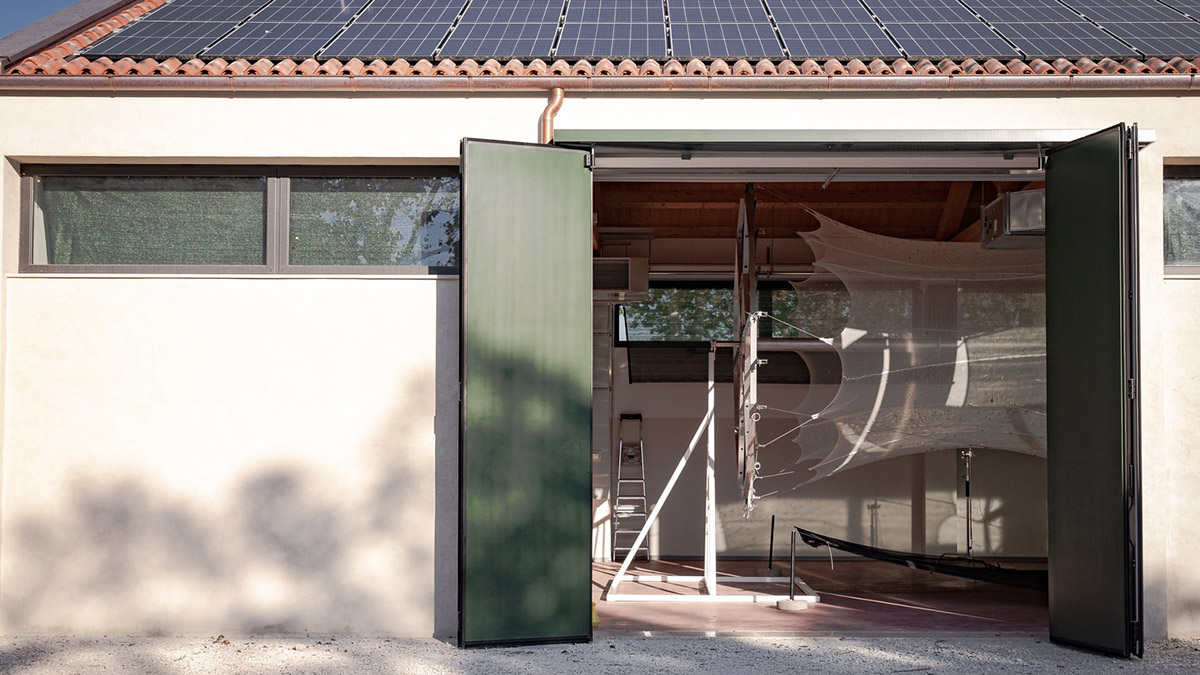
Architect, designer and inventor Neri Oxman and her Mediated Matter Group at MIT have released the process of the Silk Pavilion II in Italy.
The Pavilion is woven by 17,532 silkworms sourced sourced from Teolo, Italy, one of the most extensive silkworm-rearing facilities in Europe.
The Silk Pavilion II was a site-specific commission and on view for the first time at the Museum of Modern Art, Oxman and Mediated Matter Group's exhibition was opened on February 22 and planned to be open until May 25, 2020 at the MoMA but it was closed due to the coronavirus pandemic in March.
The Silk Pavilion II was a centrepiece of the exhibition which was installed vertically at the exhibition.
In a new 7-minute video released in a website, Oxman and the Mediated Matter Group show for the first time how 17,532 silkworms "not only act as construction workers but also act as designers".
Oxman's bio-digital process of manufacturing challenges the traditional sericulture and silk manufacturing process fuelled during the 12th century Renaissance.
The new website also showcases other projects from her "Neri Oxman: Material Ecology" exhibition, including the Totems sculpture, Aguahoja pavilion, Silk Pavilion I, Glass I and Glass II.
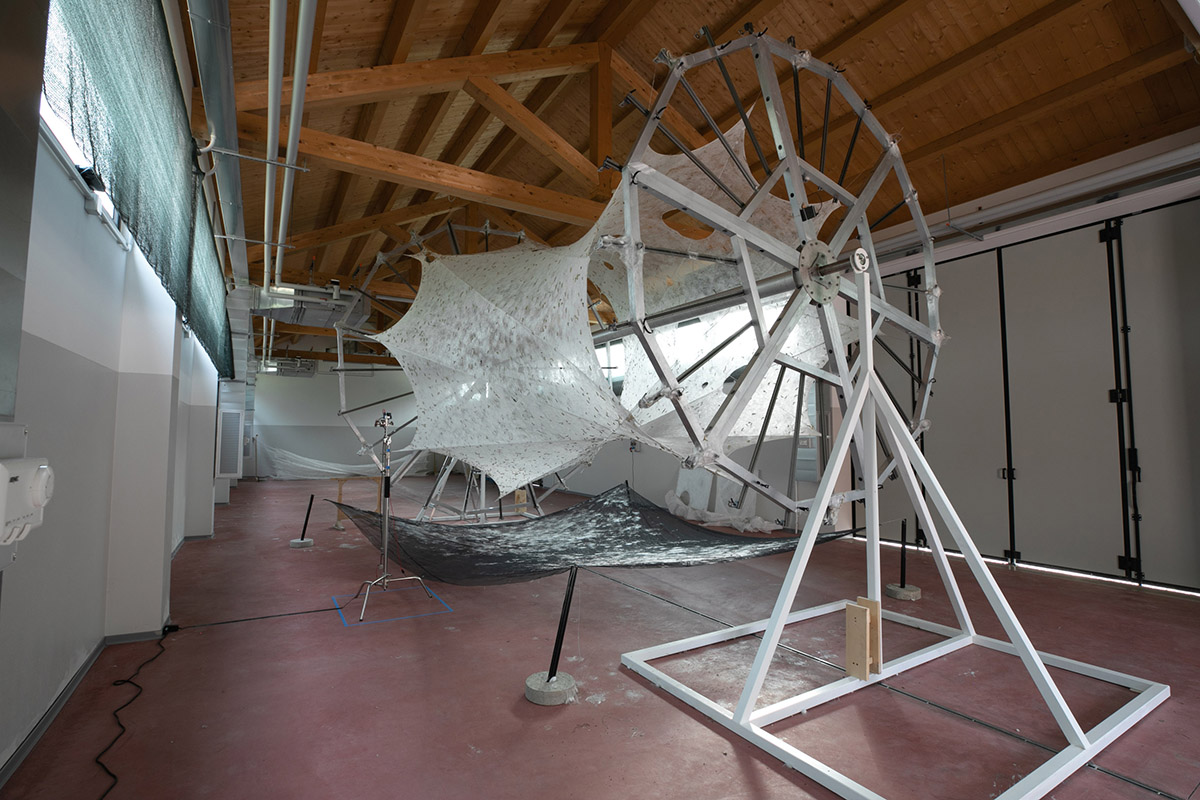
The Silk Pavilion II emerges as result of a comprehensive research developed for Silk Pavilion I, this project deals with challenges associated with scale and sericulture.
Employing an integrated kinetic mandrel designed to guide the natural spinning motion of the silkworms through clockwise rotation, the Pavilion fuses technology and biology to unite the woven and the spun.
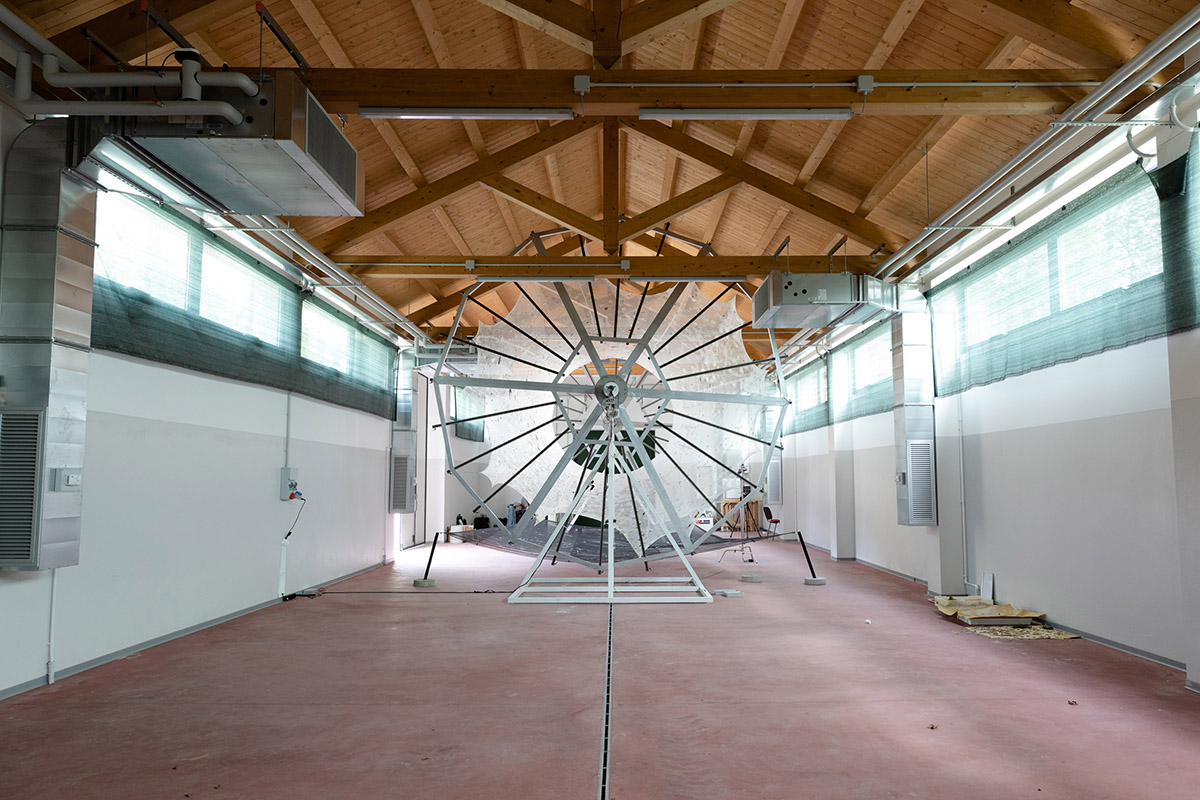
Oxman and the Mediated Matter Group start this process by sourcing 17,532 silkworms from Teolo, Italy, which is one of the most extensive silkworm-rearing facilities in Europe.
Then they install a large kinetic and look-like jig in a facility in Abano Term with 10 days of co-creation process among silkworms. The team stretch a soluble knit scaffold with a cable system in which they act as a base and support for the silkworms.
The base contains holes, which release some of the tensile stress in the structure, result from chemical reactions between the silkworms’ excretions and the underlying yarn.
"These structural forces are influenced biochemically, expressing a ‘metabolic footprint’ of the silkworms’ fluxes and flows," stated in Oxman's website.
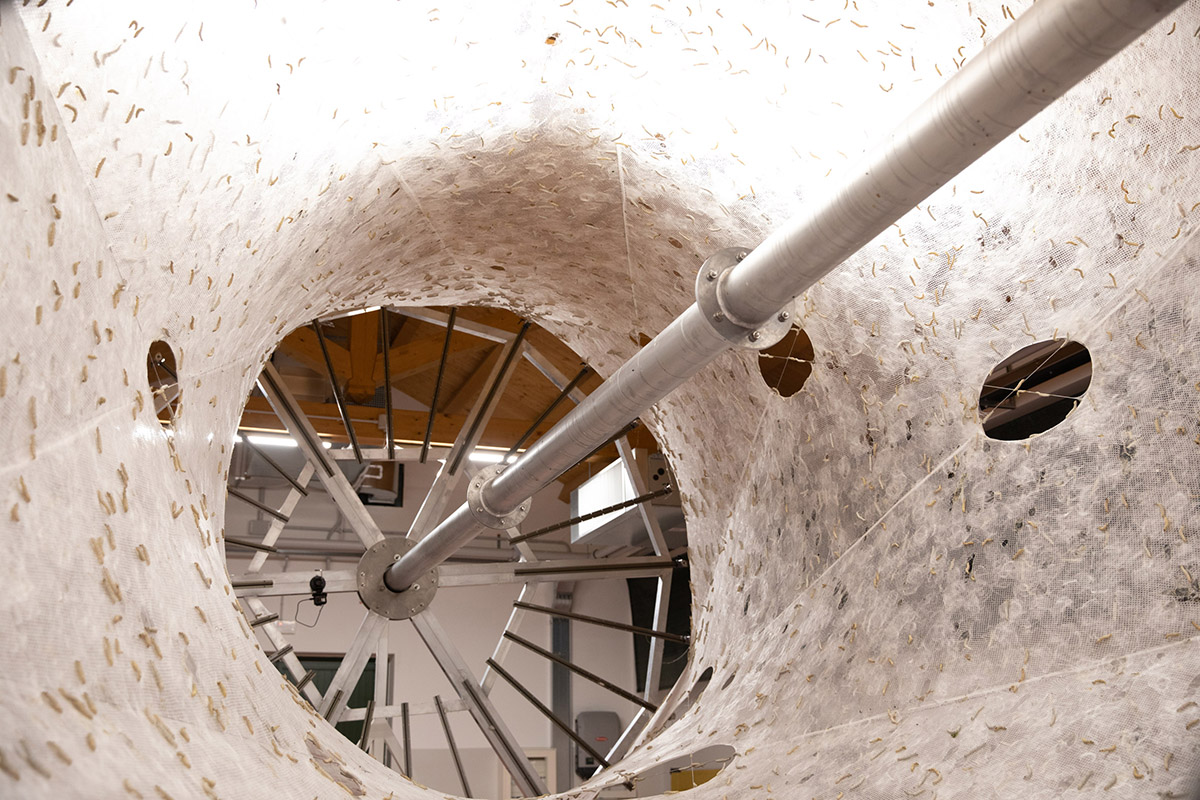
The kinetic jig, placed in horizontal direction, is programmed to rotate in clockwise direction to facilitate the silkworms’ upward spinning motion.
"Fiber density across the surface area of the structure varies as a function of local environmental factors such as the direction, duration and intensity of heat and light, as well as the topology of the kinetic hyperboloid that is designed to guide the movement of the silkworms," said Neri Oxman.
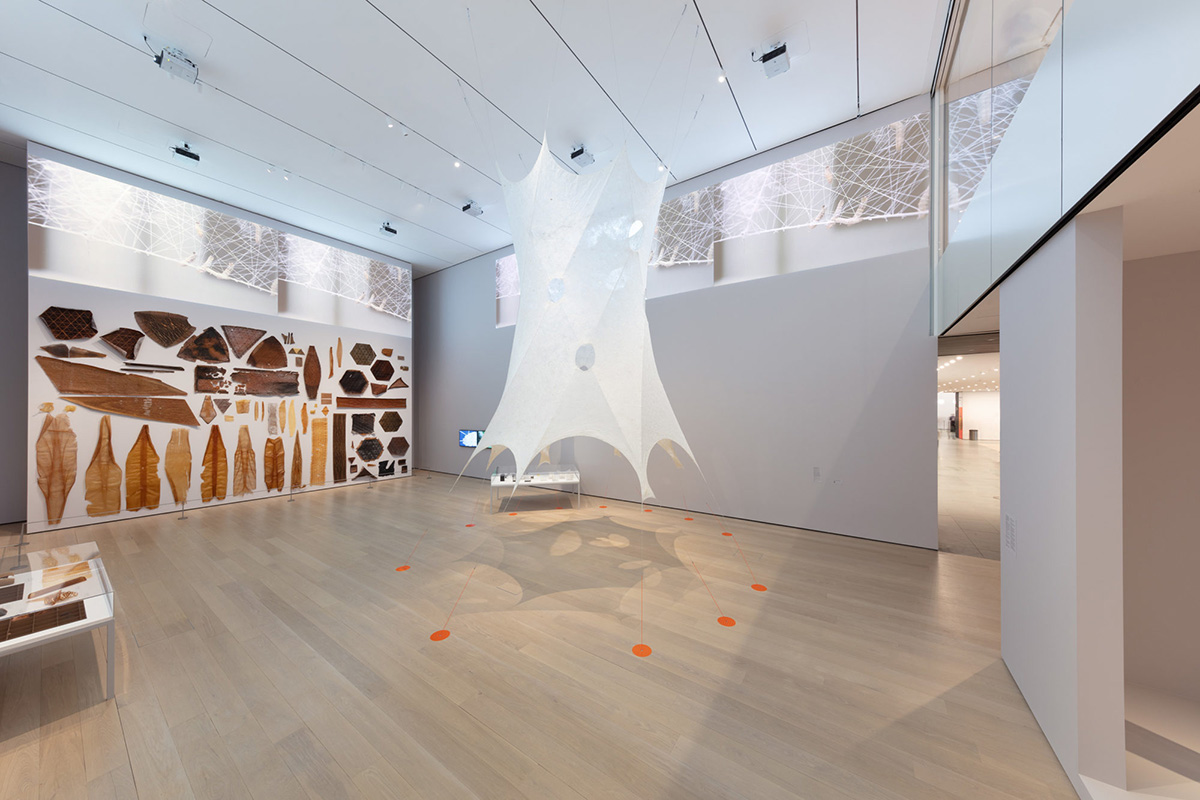
The Silk Pavilion II at the MoMA was hanged vertically. Image © Denis Doorly.
"These factors can affect the silkworms’ movement and spinning, and thereby the resulting thickness of the silk layer produced," she added.
The kinetic jig was also designed to help spread the distribution of silkworms while they metamorphize. In total, the kinetic jig reaches 15,000 rotations to create a pavilion in a horizontal format. But the Pavilion is hanged vertically at the exhibition.
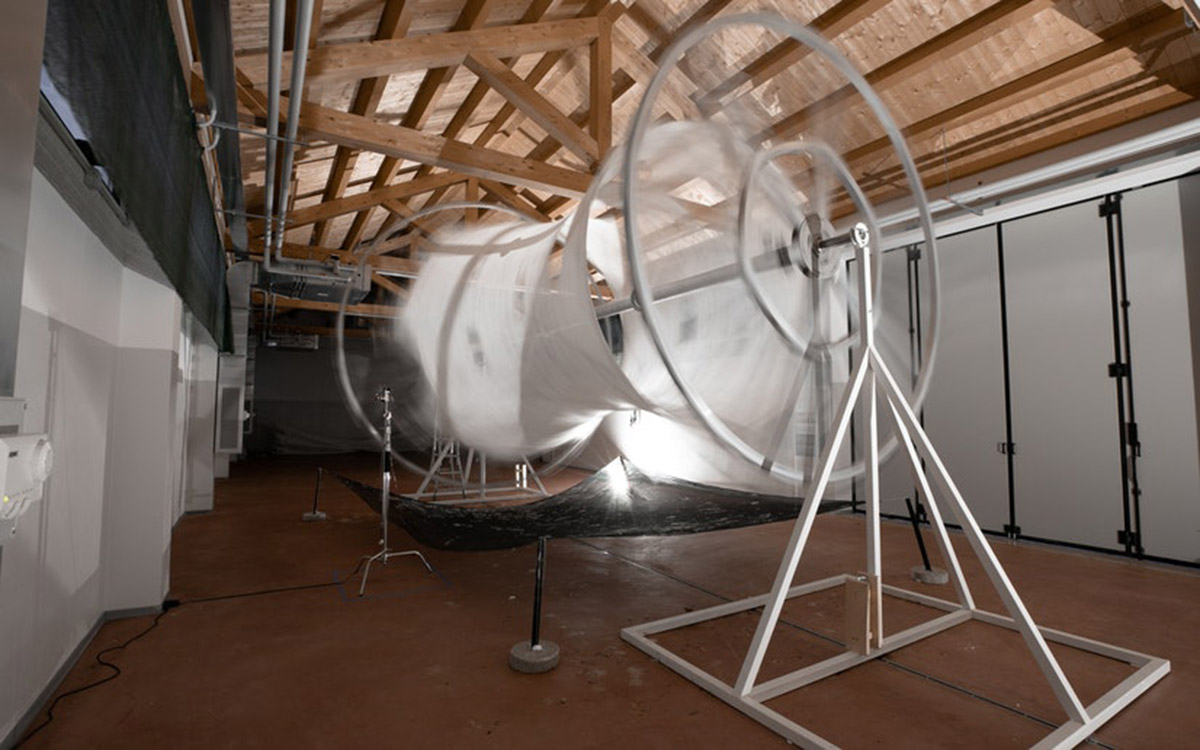
"As the Silk Pavilion demonstrates, structures can influence silkworms to spin in sheets instead of cocoons, thereby producing the same quantity of silk without boiling cocoons," said Neri Oxman in her website.
"The project illustrates how these compact and unique insects can act not only as living looms but as co-designers collaborating with humans to design and construct architectural-scale structures embodying co-fabrication for cohabitation."
"While it is a well-known fact that even the harvesting of Eri or Ahimsa silk (processed without killing silkworms through hand-spinning) is problematic due to the domestication, breeding, and exploitation of animals; our hope is that the research underlying this work will inspire many to question 7,000 years of sericulture policy at large."
The American-Israeli designer Neri Oxman is Professor of Media Arts and Sciences at the MIT Media Lab, where she leads the Mediated Matter research group.
Her team conducts research at the intersection of computational design, digital fabrication, materials science and synthetic biology, and applies that knowledge to design across disciplines, media and scales—from the micro scale to the building scale.
Project facts
Name: Silk Pavilion II.
Date: 2019-2020
Commissioned: by The Museum of Modern Art for Neri Oxman: Material Ecology
Curated: by Paola Antonelli and Anna Burckhardt
Research team: João Costa; Christoph Bader; Sunanda Sharma; Felix Kraemer; Susan Williams; Jean Disset; Neri Oxman. Undergraduate researcher: Sara Wilson
Collaborators & Contributors:
Davide Biasetto, Il Brolo Società Agricola SRL, Padua; Levi Cai; Silvia Cappellozza and Alessio Saviane, Council for Agricultural Research and Agricultural Economics Analysis (CREA-AA), Bologna; Natalia Casas; Kelly Egorova; Fiorenzo Omenetto, Tufts University; Sol Schade, Advanced Functional Fabrics of America (AFFOA); James C. Weaver, Wyss Institute, Harvard University; Nitzan Zilberman; Bodino; Front Inc.; MIT Media Lab; Robert Wood Johnson Foundation
All images courtesy of Neri Oxman, unless otherwise stated.
> via Neri Oxman
